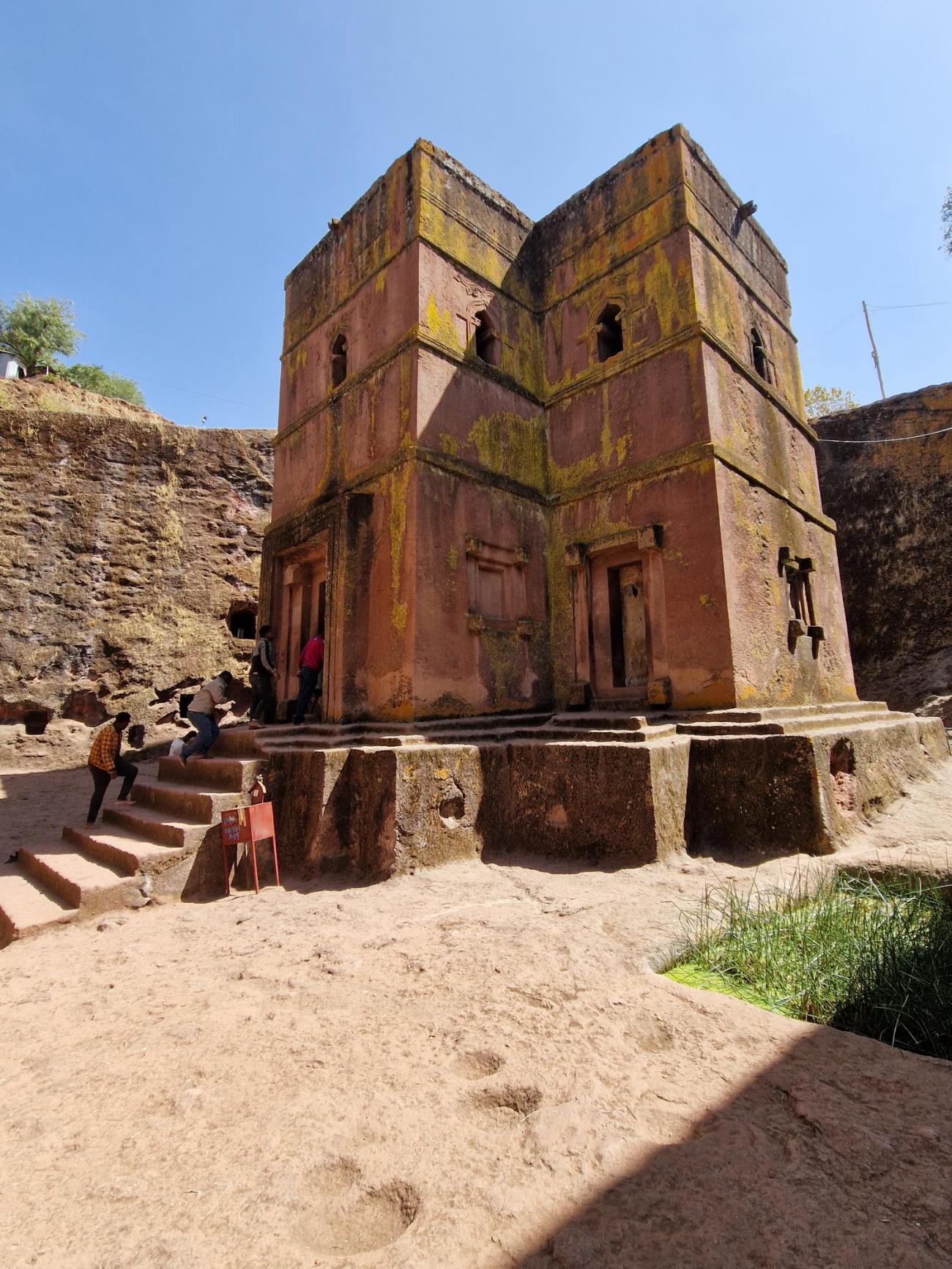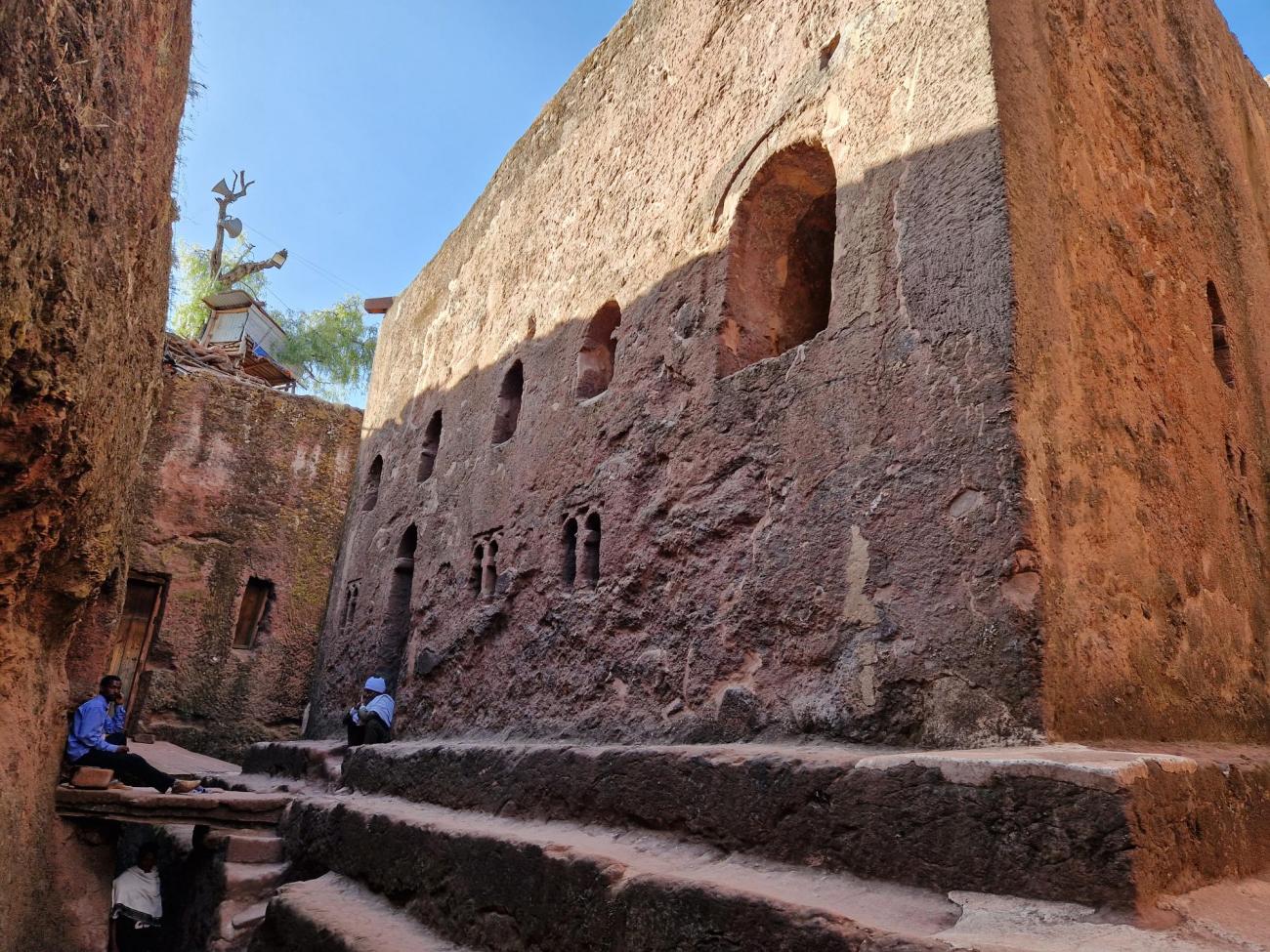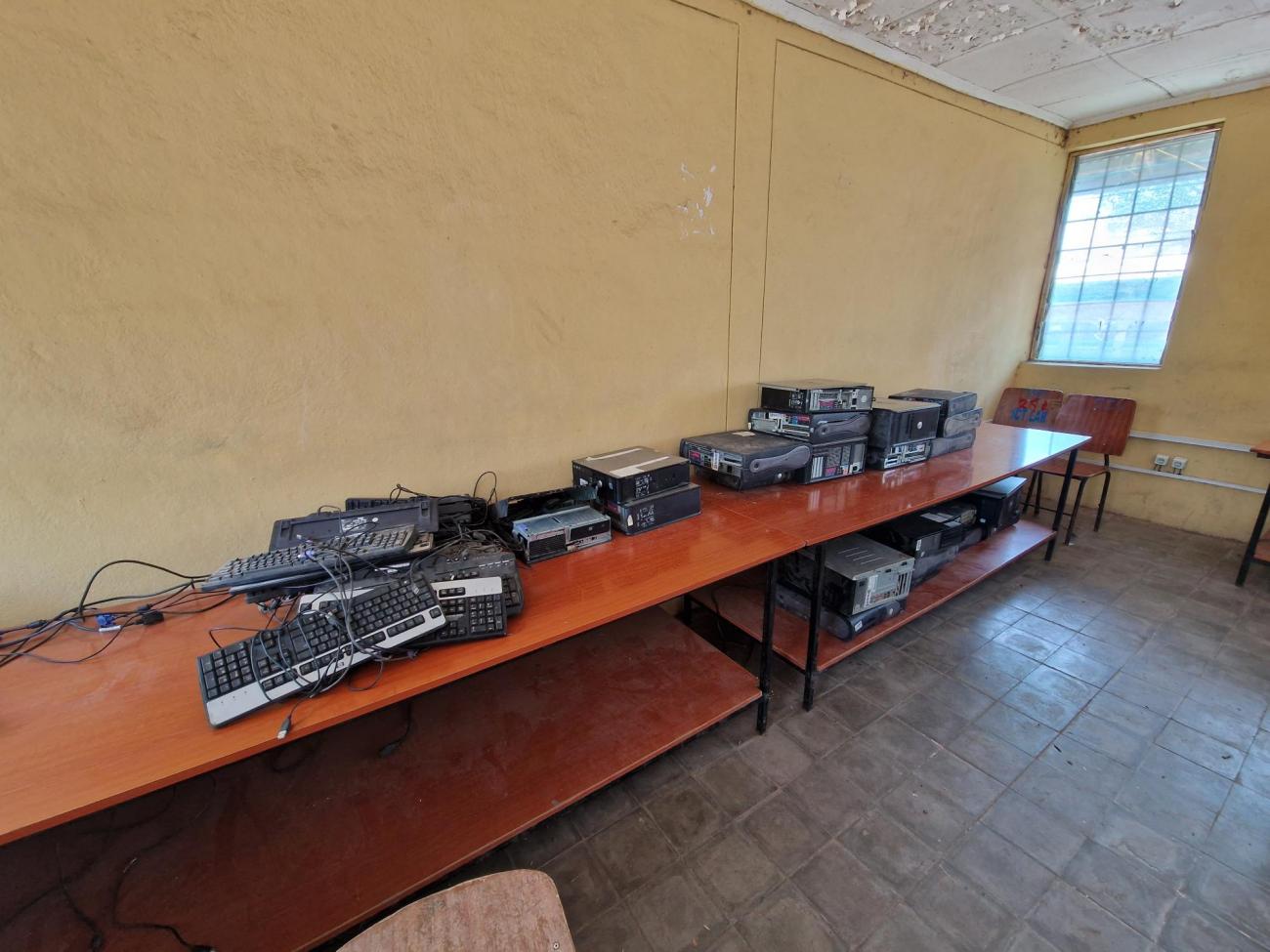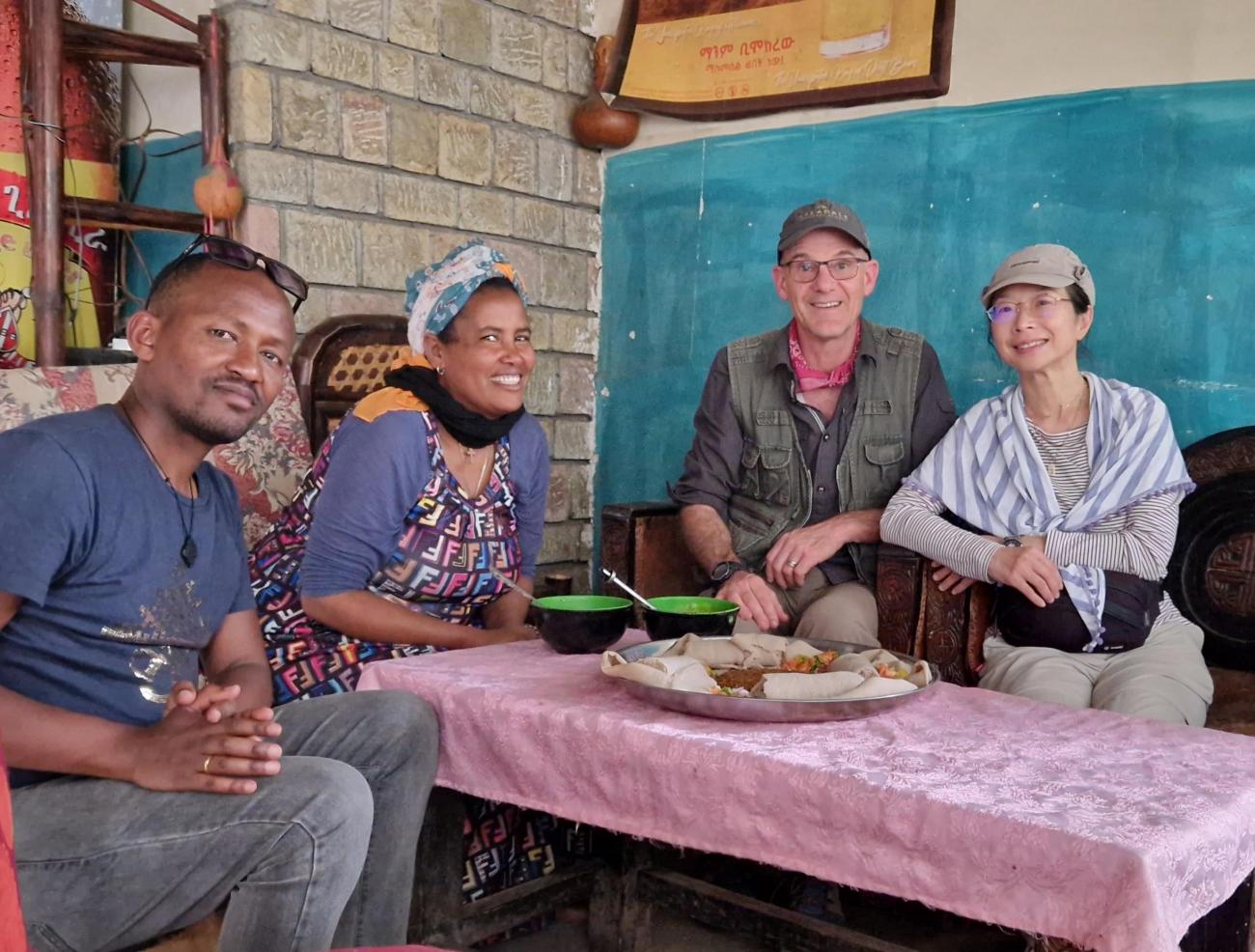In Lalibela
As far as the great man-made structures of the world are concerned, I have been lucky enough to see most. The Taj Mahal, Angkor Wat, Machu Picchu, The Pyramids of Giza and the great Mayan sites of Tikal and Chichén Itza all spring to mind. But while these are truly magnificent creations, they are all built, that’s to say they are, on the whole, structures where one stone has been placed on another, climbing from the ground up. What makes Lalibela so extraordinary, is that the famous World Heritage churches are carved out of the rock, from the top down.
Created, it’s believed, during the reign of King Lalibela, towards the end of the 12th and beginning of the 13th centuries, there are 11 churches in town, split into two clusters, one to the north, one to the south, with the most famous - St Georges - positioned to the west of the others.

The origins of the churches are open to debate. Locals believe they were created over a 21-year period, with a human earthly force replaced each night with a celestial one. However, scholars think that even with an angelic intervention, given the differing styles and state of repair of the various churches, construction probably took place over a much longer period.
Whatever the truth behind their creation, there is no denying that these places of worship represent one of the most extraordinary sites anywhere on earth. While Bet Medhane Alem - meaning House of the Saviour of the World - is impressive for its scale (at 33m long and 11.5m high, some say the largest rock-hewn church in the world) and Bet Maryam - House of Mary - for its impressively decorated interior, it is the masterpiece of Bet Giyoris - House of St George - that really amazes. Carved as a perfect Greek cross, 15m high over three distinct plinths, it represents the pinnacle of rock-carved churches.
.jpeg)
But as striking as the exterior of these churches are, it’s when you walk inside and gaze up at the giant and perfectly symmetrical columns, arches and carvings that you really begin to question reality. Conditioned as we are to think of buildings as structures built from the ground up, it's actually really hard to get your head around the fact that these buildings have been carved out of just one piece of rock. Lalibela, and its incredible churches, are reason enough to visit Ethiopia.

But the churches weren’t the only reason we were here. During the recent war, the TPLF occupied the town and among other things looted the local high school. Through an Irish NGO called Camara, we supplied reconditioned computers to the school, all of which were either trashed or stolen during this period. Camara wanted me to visit the school and see the damage for myself so we, through the Wild Frontiers Foundation, could help replace them. And it was depressing. Where before the war there were two computer labs, each with 25 computers, used to teach the students coding and general IT skills, there were just empty shells left.

From here we visited the family of Wubit, a lovely woman who used to give our groups a home-cooked meal. Unfortunately, she fell and broke her leg badly just before the pandemic and needed plates to put things right. We wanted to check she was okay. And finally, we ended the day with a cooking lesson and coffee ceremony.
Today we are heading off the grid on a two-day trek across the stunning Ethiopian Highlands, towards Lake Tana. Supported by local communities, it’s an experience we have long sold but I have never done. I can’t wait…

